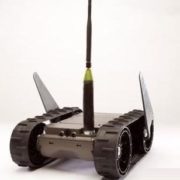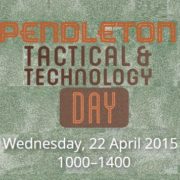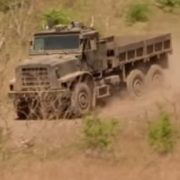The US Army War College (USAWC) just released its key strategic issues for the academic year 2015/2016. People who wish to understand the direction of the American military would be wise to study this document.
What is the US Army War College?
Every year, the USAWC provides graduate level instruction to approximately 800 Army colonels, and lieutenant colonels. Before matriculation, all students must have first completed U.S. Army Command and General Staff College. Also attending are some civilians from Department of Defense, State Department, and the National Security Agency as well as officers from other military services. After completing a full time 10 month course (or a half-time 2&1/2 year course) students are awarded a master’s degree in strategic studies.
In brief, this is a high-level leadership course for high–level leaders.
What is the Strategic Studies Institute?
A significant element of the USAWC is the Strategic Studies Institute (SSI). Interestingly, the SSI website does not list education or courses as their “product,” but focus on a variety of white papers, studies, monographs, and books. The SSI has a worldwide network of “external partners” who write about half of these publications. These publications are distributed to decision makers in the military, government, and industry. In addition to the above-mentioned master’s program, these publications are an important way of influencing military and security policies.
What is the Key Strategic Issues List?
As described by the SSI website, “Every year SSI compiles a Key Strategic Issues List (KSIL) based on input from the U.S. Army War College faculty, the Army Staff, the Joint Staff, the unified and specified commands, and other Army organizations. This is designed to guide the research of SSI, the U.S. Army War College, and other Army related strategic analysts.”
What does the KSIL actually say?
I had two immediate impressions of the KSIL. First, it doesn’t provide answers, it raises questions. For example the KSIL doesn’t state something along the lines of, “The American military better get its act together in the Pacific theater, because China is scaring the bejejuss out of its neighbors.” Instead, it asks a variety of related questions, including “How can the Army best contribute to security assurance and deterrence in East and Southeast Asia?”
Secondly, it lists emails of numerous professors, many of whom are key influencers in their own right. For someone doing serious research on American military thinking, and needs to reach out to significant people, this is a treasure trove of contact information.
Quantitative analysis
One way of determining the importance of a topic is to count how often it is mentioned. The KSIL is a PDF document, so I was able to use the “find” function to search for appropriate words.
For example, the word “China” is mentioned over 10 times. This is to be expected. The current administration has been very public about its “Pacific Tilt.” It makes sense that the Army would prepare its leadership for this theater.
Cyber war was mentioned 10+ times. I discussed this with Robert Culver, Robert Culver, AMREL’s Director of Business Development Programs (DOD), who has had a long career in both the Army and Pentagon procurement. He reported extreme interest in cyber war at the recent AUSA gathering and suspects significant funding will be flowing in that direction.
More disappointing was the complete lack of references to unmanned systems. Even the more colloquial terms “robot/robotics” were only mention 3 times, and usually in a laundry list of other issues. Just a few years ago, unmanned systems was the hot girl the military couldn’t wait to date. Now, it’s the ex that gets blocked on FaceBook.
Robert thinks the non-mentions of unmanned systems are insignificant. He said that the KSIL is a strategic document, and unmanned systems are a tactical issue.
I understand his reasoning, but I don’t entirely agree. Unmanned systems have important ramifications that could be considered strategic in that they affect our ability to project force on a regional basis. Unmanned systems achieved prominence in Afghanistan and Iraqi campaigns, which despite our continued involvement, are being flushed down the memory hole. IEDs, the most lethal weapon of those campaigns, get zero mentions. No mention at all of counter insurgency (insurgency only once). As further evidence of our disengagement with the Middle East, Africa got more mentions than Syria, ISIL (ISIS), and Iraq put together.
War is just so complex
Important topics expressed in KSIL are “complexity” and “hybrid” warfare. As illustrated by Russian tactics in the Ukraine, a complex/hybrid war occurs when the enemy is simultaneously fielding traditional state-controlled military forces, irregular militias/guerillas, cyber attacks, and media/propaganda campaigns. Lt. Gen. Robert M. Shea, USMC (Ret.) writing in Signal magazine, gives a nice, introduction to the challenges of complex/hybrid wars. He is concerned that the traditional American strength of joint warfighting is being eroded by the demands of this new kind of war.
Amateurs study tactics. Professionals study something else.
I was disturbed that there were very few mentions of acquisitions, procurement, and logistics. I understand that these are technically tactical concerns, and are much less sexy than cyber warfare. However, the continued inability of the American military to deal with the problems affecting procurement has profound strategic implications.
Our reliance on expensive weapon systems as well as expensive soldiers has severely limited our ability to project force in many parts of the world. Clever enemies have turned the poor quality of their fighters and equipment into an advantage. A lost battle may cost them $10,000, but the victory for us may cost us $10 million. Even for as nation as wealthy as ours, this is not sustainable. Top-level officers and strategic leaders may not be interested in this problem, but they should be.
Read it for yourself
The Key Strategic Issues List is worth reading in its entirety. Download it here.












